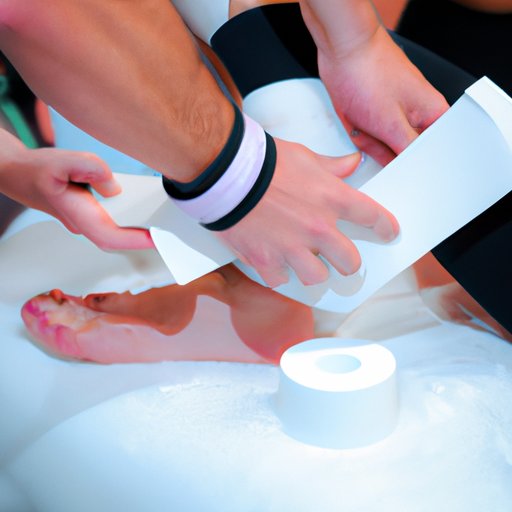
I. Introduction
Almost everyone, athletes, fitness enthusiasts, or people working a 9 – 5 job, have at one point experienced sore muscles. Sore muscles cause muscle pain, stiffness, and in extreme cases, restricted movement. It can affect one’s daily activities, including simple tasks like walking or typing. This article aims to discuss various techniques and tips that help relieve sore muscles.
II. Stretching and Yoga
Stretching and yoga are effective techniques for relieving sore muscles. They work by releasing muscle tension and increasing flexibility, which in turn helps reduce soreness. Yoga involves a range of poses that can help stretch and lengthen muscles, providing relief from muscle pain. Some common stretches like toe touch, quad stretch, and hip flexor stretch can also help relieve sore muscles.
III. Massage Therapy
Massage therapy is another effective technique for relieving sore muscles. Massage works by reducing muscle tension, leading to improved blood circulation, which in turn, helps reduce soreness. There are various types of massage therapy, including Swedish, deep tissue, and sports massage. Each technique has its benefits, and depending on the type and severity of soreness, the therapist can recommend the best technique. It is also important to stay hydrated after a massage and avoid vigorous activity immediately afterward.
IV. Hot and Cold Therapy
Hot and cold therapy techniques can help reduce soreness. Applying heat to sore muscles via a hot pack or warm shower dilates blood vessels, increases blood flow, and oxygen supply to the sore area, helping to ease muscles. Cold therapy, on the other hand, involves applying ice packs or using a cold compress. Cold therapy can help reduce inflammation and swelling, which in turn helps reduce soreness. Both hot and cold therapies should last between 10 – 20 minutes, but it is important to consult with a doctor for optimal time and temperature.
V. Foam Rolling
Foam rollers are used for self-myofascial release to reduce muscle soreness. Foam rolling works by applying pressure to tight, sore muscles, which in turn aids blood flow to release muscle tension. Foam rolling techniques can target different muscle groups in the body, including legs, back, and shoulders. It is important to be cautious as excessive pressure can cause more harm than good.
VI. Epsom Salt Bath
Epsom salt baths are relaxing and provide relief to sore muscles. Epsom salt contains magnesium, which aids in muscle relaxation and reducing inflammation. Warm water also helps in increasing blood flow, which dilates blood vessels and improves oxygen supply to muscles. To get the most of an Epsom salt bath, it is recommended to soak for at least 20 minutes and hydrate before and after the bath.
VII. Hydration and Nutrition
Muscle soreness can also be prevented by maintaining proper hydration and nutrition. Staying hydrated ensures the body has enough fluids to move nutrients to the affected area for recovery. Foods high in protein, such as eggs, lean meat, and dairy, aid in the healing process and help build muscle. Additionally, foods high in anti-inflammatory properties such as cherries, berries, and leafy greens can also help with muscle recovery.
VIII. Conclusion
In conclusion, sore muscles can be a hindrance to daily activities, but there are various techniques for relieving sore muscles. Stretching, yoga, massage therapy, hot and cold therapy, foam rolling, Epsom salt baths, hydration, and nutrition are all effective in reducing muscle pain and soreness. Always consult a doctor before trying any of these techniques to avoid injury. Finally, we’d love to hear from you.




